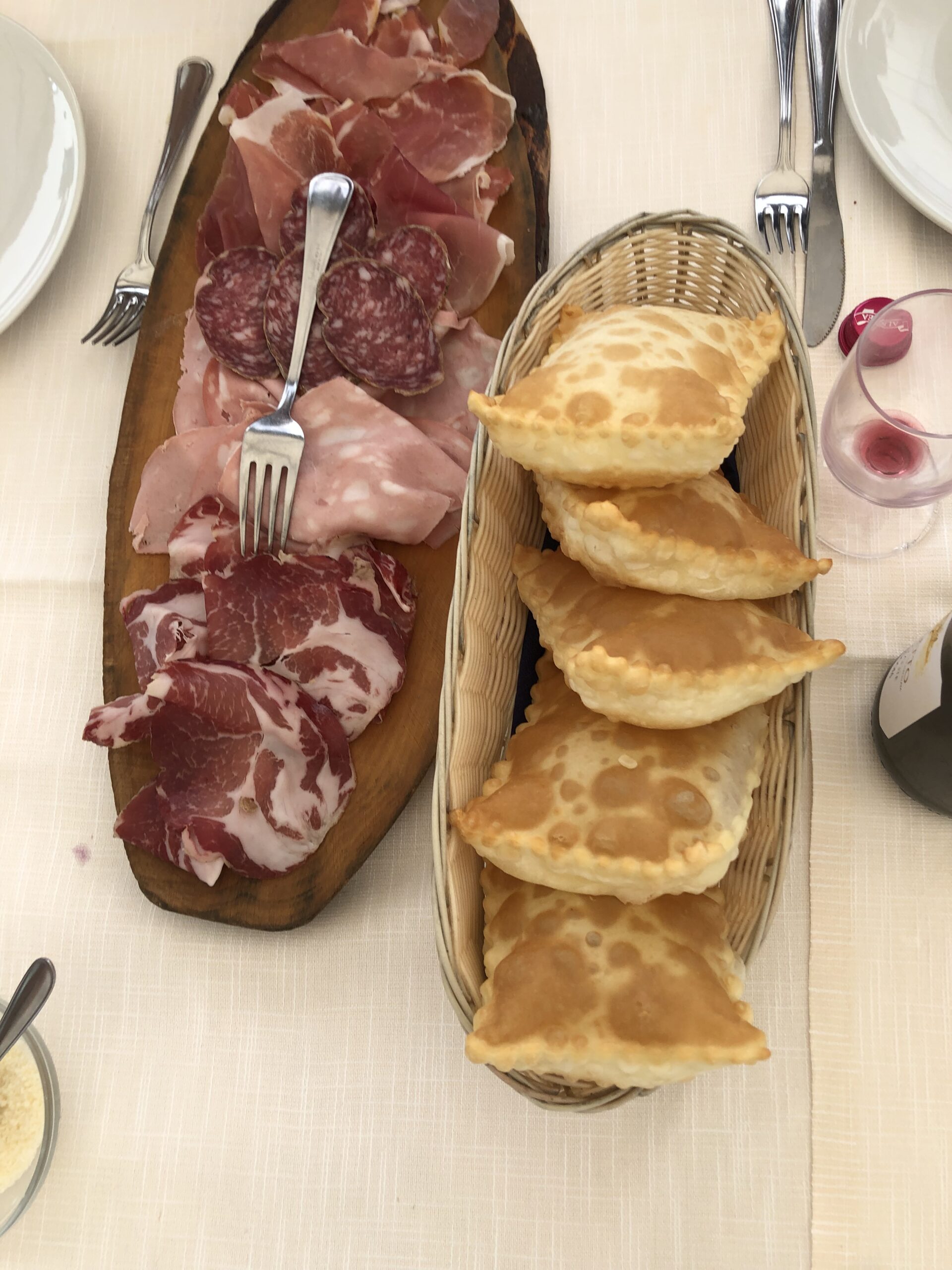
Friday, June 10th: Slow Eating In Italy
On Friday last week, we took a day trip to northern Italy to take a balsamic vinegar tour. As part of our trip, we attended a group lunch at Ristorante Corte Degli Ulivi. Here is where I experienced slow eating for the first time. Slow eating refers to eating customs that are closely tied to Italian culture. In Italy, food is seen as a communal experience that encourages not only quality of food but also quality time. This approach to food and dining was quite a culture shock.
Before our meal began, the dean of students at Ldm (a native Italian) warned us to “take it slow.” “Don’t fill up on the bread,” he said, motioning to the basket of freshly baked warm bread. He explained that there was much more food to come (seeing as we would be having a three-course meal that evening).
The first course served was tortellini. The waiters came out with large pans serving each participant a small portion of tortellini and lasagna. When I initially saw the portion size, I was shocked because our portion sizes in America are typically significantly larger. I was worried that Il wouldn’t feel satiated, but I was quickly proved wrong when the waiters came out with more pans of tortellini and lasagna, eager to serve us seconds and thirds. This theme carried on throughout the entire dining experience. We were served gnocco fritto and cured meats for our second course along with bread, lard, and Nutella. Finally, for our last course, we were served deserts quickly followed by limoncello to cleanse our palettes.
I was not only full but satisfied by the end of our meal. The food and social interaction combined together created an immersive experience with food that I’d never had before. In America, where the fast-food industry is large and most prevalent, service is often oriented around speed instead of around the experience itself. For Americans, if things aren’t timely the service isn’t great. Whereas with slow eating, dinner is about more than getting your plate of food fast but instead about enjoying the food and the company around you.
This style of eating is something, I enjoyed, although it was different from what I’m used to.
Although this eating style was different from what I’m used to, I immensely enjoyed the experience. I loved being able to relax and take my time while eating. It was also nice to know that I had a sense of control over my food. I could quickly tell the waiter that I was finished if I didn’t want more. If I did want more, I could signal the waiter to serve me seconds. If I wanted to take a break in between, I knew that a waiter would most likely come around a few more times with fresh pans of food, offering more food to those who wished to indulge more.

